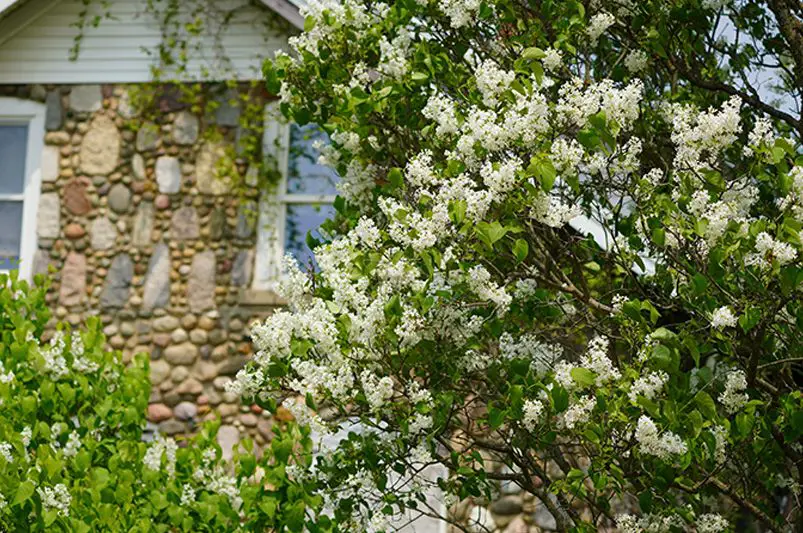Planting a tree is a rewarding experience. But timing matters.
The best time to plant a tree depends on several factors, including climate and tree type. Understanding the right season can ensure your tree thrives. Trees need the right conditions to grow strong and healthy. Planting at the wrong time can stress the tree, making it harder for it to establish roots.
In this blog, we will explore the best times to plant different types of trees. We’ll consider factors like weather, soil, and tree species. By the end, you’ll know the optimal time to plant your tree, ensuring it grows into a beautiful, mature specimen. Let’s dive in and find out when to plant your tree for the best results.
Importance Of Timing
Planting a tree at the right time is crucial. It helps the tree grow strong roots. Strong roots mean a healthy tree. Trees planted at the right time can grow faster. They also face fewer problems. Timing affects the tree’s ability to absorb water and nutrients. Trees planted at the wrong time may struggle. They might not grow well. This can lead to weak and unhealthy trees.
Weather plays a big role in tree planting. Trees need the right amount of water. Too much or too little can harm them. Planting in spring or fall is usually best. The weather is cooler. There is also more rain. Hot summers can stress young trees. Cold winters can damage them. Choose a time when the weather is mild. This helps the tree adjust to its new home.

Credit: klimacoin.com
Seasonal Planting Guide
Spring is an excellent time to plant trees. The soil is usually moist. This helps the roots to grow quickly. Days are longer with more sunlight. Trees get the energy they need. The weather is also mild. This reduces stress on new trees.
Fall is also a great time for planting trees. Cooler temperatures help trees to grow roots. There is also less chance of drought. Trees can focus on root growth. This will help them to be strong in the spring. Avoid planting too close to winter.
Climate Factors
The best time to plant a tree is when the temperature is mild. Hot weather can stress young trees. Cold weather can freeze their roots. Spring and fall are ideal seasons. The soil is warm. The air is cool. Trees need these conditions to grow well.
Rainfall is crucial for tree growth. Too much rain can drown the roots. Too little rain can dry them out. Consistent rainfall helps trees establish roots. In many places, spring provides good rainfall. Fall also has moderate rain. These seasons balance water needs and prevent stress on young trees.

Credit: goleansixsigma.com
Soil Preparation
Test the soil before planting a tree. Soil tests show the pH level. They also reveal nutrient levels. This information helps in deciding what the soil needs. Good soil supports tree growth.
Add compost to improve the soil. Compost provides organic matter. It helps retain moisture. Use fertilizers based on soil test results. Fertilizers give trees the nutrients they need. Apply them carefully to avoid over-fertilizing.
Tree Species Selection
Native species are trees that naturally grow in your area. These trees adapt to local weather. They need less water and care. Birds and insects love native trees. These trees help the local ecosystem. They are the best choice for your garden.
Non-native species come from other places. These trees may need special care. They can be more sensitive to local weather. Some non-native trees can become invasive. This means they grow too fast and harm other plants. Choose non-native trees carefully. Make sure they suit your garden.
Planting Techniques
Early spring or fall is the best time to plant a tree. Cooler temperatures help trees establish roots.
Hole Size And Depth
The hole must be twice as wide as the tree’s root ball. Depth is crucial. The hole should be the same depth as the root ball. This allows roots to spread. Shallow planting can harm the tree. Deep planting can suffocate roots. Adjust the soil level. Ensure the tree stands straight. Pack soil gently around the roots. Avoid air pockets. Water thoroughly after planting. This helps the soil settle.
Watering Methods
Watering keeps the tree healthy. Newly planted trees need more water. Water them deeply. Do this every week. Use a slow, steady stream. This helps water reach the roots. Avoid watering the leaves. Wet leaves can cause disease. Use mulch to retain moisture. It also keeps weeds away. Check soil moisture often. Dry soil means the tree needs water. Wet soil can lead to root rot. Balance is key.
Post-planting Care
Mulching helps keep the soil moist. It also keeps weeds away. Use organic mulch like wood chips. Spread it around the base of the tree. Keep the mulch layer 2-4 inches thick. Make sure it does not touch the tree trunk. This can cause rot.
Pruning helps the tree grow strong. Cut off dead or weak branches. Use clean, sharp tools. Do this in late winter or early spring. Do not over-prune the tree. Too much pruning can harm it.
Common Mistakes
Planting a tree at the wrong time can hinder its growth. Avoid planting during extreme weather conditions. Early spring or fall is ideal for most trees.
Overwatering
Many people think more water is better. But too much water harms trees. It can cause roots to rot. This weakens the tree. Check the soil before watering. If it is wet, wait a few days. Let the soil dry out a bit. Water deeply but less often. This helps roots grow strong.
Improper Planting Depth
Planting too deep or too shallow is bad. The root flare should be at soil level. If buried, roots can’t breathe. If too high, roots dry out. Measure carefully before planting. Dig a hole just right for the root ball. This ensures the tree grows well.

Credit: www.givemetrees.org
Frequently Asked Questions
What Is The Best Season To Plant A Tree?
The best season to plant a tree is during the fall. Cooler temperatures and increased rainfall help trees establish roots.
How Does Climate Affect Tree Planting Time?
Climate greatly influences the ideal planting time. In temperate regions, fall or spring is best. In tropical areas, the rainy season is ideal.
Can I Plant Trees In Summer?
Planting trees in summer is not recommended. High temperatures and dry conditions make it hard for trees to establish roots.
Is It Okay To Plant Trees In Winter?
Planting trees in winter is possible in mild climates. However, in areas with harsh winters, it’s best to avoid it.
Conclusion
Planting a tree at the right time ensures its healthy growth. Spring and fall are ideal seasons for planting. In these seasons, the weather is mild. Trees establish roots better in cooler temperatures. Avoid planting in extreme heat or cold.
Proper timing also reduces stress on the tree. Remember to water regularly and provide care. By planting at the right time, you support a greener future. Happy planting!

My mission is to help you bring the beauty of nature indoors with expert advice, detailed plant care guides, and creative design ideas.





Leave a Reply